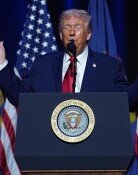[Editorial] Mexicos FTA Example
[Editorial] Mexicos FTA Example
Posted December. 28, 2006 07:18,
Mexico, which has signed free trade agreements, including NAFTA, with 46 countries, became the worlds eighth trader last year. Mexican Finance Minister Agustin Carstens, proudly explained, Thanks to NAFTA, we achieved the remarkable results of creation of one-million jobs, a 40 percent increase in GDP, ending of the chronic trade deficit, growth in FDI and a 70-percent increase of labor productivity in the manufacturing sector.
Opponents of a Korea-U.S. FTA argue that a free trade deal will bring about fatal side effects to Korea, such as the transfer of the countrys economic sovereignty to the U.S., collapse of subsistence farmers and worsening bipolarization in society. However, as the Mexican finance minister pointed out, the arguments amount to a misunderstanding caused by ignorance or malicious distortion. Mexican Ambassador to Korea Leandro Arellano said, The gap between rich and poor (in Mexico) is the result of a structural problem shaped under the colonial rule. The gap has been narrowed after concluding NAFTA. The countrys trade increased even in the agricultural sector, which lagged behind that of the U.S., as its production structure shifted to focus more on export items, and therefore contributed to achieving the countrys trade surplus. Of course, cultivation areas and production went up accordingly.
The IMF and the World Bank released a report that says, NAFTA is the number one contributor to Mexicos economic stability. This means that the introduction of NAFTA has boosted the industrial infrastructure, improved productivity, created jobs and enhanced the national image of Mexico. To be sure, the countrys remarkable economic accomplishment is not just thanks to trade liberalization. It is the result of a combination of deregulation on private investments, transparent taxation, fostering of human resources and the flexibility of its labor market.
Koreas GDP and trade volume are the 12th largest in the world, but it has signed an FTA with just three countries. Against this backdrop, the Roh Moo-hyun administration decided to pursue an FTA with the U.S. to clear up obstacles to free trade and drastically enhance the effect of market opening. The bilateral FTA was expected to dispel concerns at home and abroad about the weakening bilateral alliance with America.
Now, the FTA is at a crossroads. The administration is finding it impossible to reach its original goal of concluding the agreement before the year-end. To strike a deal before President Bushs TPA ends, the negotiations should reach a conclusion by March. There is no time to waste, being swayed by the unfounded and untrue opposition claims, violent demonstration and strikes of militant labor unions to hinder the negotiations. President Roh should exercise his leadership in concluding the free trade agreement. Also, the U.S., for its part, should demonstrate a forward-looking attitude because it is talking about an FTA while maintaining non-global standards, including anti-dumping duties, against Korea.







